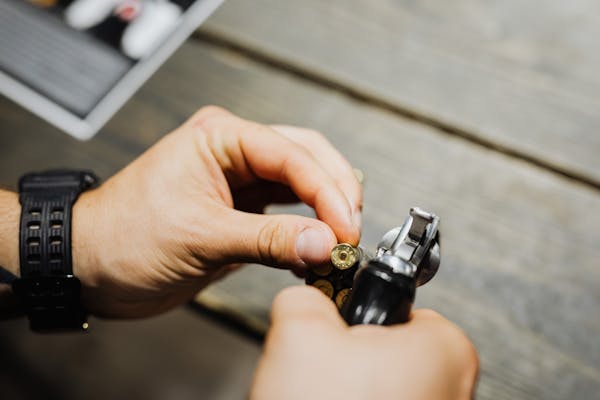Huge Guns Of The Boer War

The Second Anglo Boer War centenary celebrations took spot in 2001, and because then we observed a circulation of new historical writings on the matter. These writings just illustrate how the great fight among the South African Boers (Burghers) and the British of far more than a hundred years ago carry on to exercise a fascination. The Anglo Boer war was not just yet another war. It was a war that occurred in a quite interesting time in our background, the commencing of the technological age. The most intriguing concern of this war was almost certainly how the 60,291 Boer Burghers (untrained, unskilled and undisciplined) could hold the 458,610 properly trained soldiers of the British at bay for so long. The answer might lie in the truth that the British severely underestimated the hearth electrical power of the Huge GUNS of the Boers.

The magic formula weapon of the Boers that created a huge difference was the legendary Prolonged TOM. The 155mm Creosot gun, acquired this nickname (provided by the British) thanks to thanks to the extended barrel and its prolonged firing assortment. President Paul Kruger was not very pleased with this name, but it shortly became a common phrase on everybody's lips and there was nothing he could do about it. Kruger imported these guns from Schneider & Co in Creosot (France) in 1886, largely to serve as fortress guns to shield the city of Pretoria from enemy assaults. Each of the 4 Prolonged Toms requested was equipped total with 8000 shells. This was an superb fortress gun, due to the fact when elevated, the 94 lb (forty two,6 kg) shells could fired at a distance of about eleven 000 yards (10 154 m), which was the longest range of any gun in use throughout that time. Every single of the 4 guns obtained a title based mostly on the name of the hill on which the fortresses have been positioned, supposed to protect the principal methods to Pretoria, namely Wonderboompoort, Klapperkop, Schanzkop, and Daspoort. Recoil goes hand in hand with a large firing energy. To preserve the huge gun in placement after a shot it experienced to be mounted on a special foundation plate with the brakes bolted down. Later in the course of one of the wars the Boers utilized these items in action with out a base plate, which send the gun running backwards for forty meters. The Boers then recognized that this was a excellent technique to use when they want to retreat speedily.
When war broke out in between Britain and the Boer Republics in September 1899, the Boer War Council worked out their careful programs to assault the British forces. They made a decision to attack the two primary forces in Ladysmith and Dundee. It was only then that the council made the decision to ship two Extended Toms to the battlefront. These guns have been certainly not designed as a discipline gun and the British nowhere almost imagined to uncover by themselves stop up in a duel with these guns.
One of the most significant hurdles to conquer was the weight of these weighty guns, as each and every gun weighed almost seven tons. The ammunition of a Long Tom was just as heavy as the gun itself, weighing about 40kg each. It was over and above everybody's creativeness that these guns could be transported more than tough terrain to the battlefield, and absolutely not up a mountain. Twelve to fourteen oxen were required to pull these guns on level floor, and up to yet another twenty to forty oxen were needed for steep angles or difficult terrain. But the Boers created a plan. They had been to begin with transported by rail as significantly as achievable and only later on pulled by a carriage and oxen. These guns then arrived in Natal by rail throughout October 1899, and they were ultimately dragged to the battle fields with fantastic success and with the admiration of the British gunners.
Presently during the first battles in Natal, the British forces recognized that their possess artillery ended up considerably inferior to the extended variety Boer guns. Following the successes at Elandslaagte and Rietfontein, Joubert and the State Artillery had been transferring to Ladysmith across sort Dundee, and the Free of charge Staters were to the north and west. The two forces ultimately united to attack Basic White in Ladysmith. The major issues that equally armies experienced in this area was of course the geography. There are Can guns be shipped in US? of hills, up's and down's, with the Tugela river twisting via the area. To transfer the Long TOMS was not easy, but they did it. To make factors even worse, they also experienced to reckon with an occasional thick blanket of mist that brought on negative visibility, and then the standard rain, hail and thunderstorms. They even had to cross a river! This of system did not discourage the Point out Artillery and they reached the area of Ladysmith. The next challenge was to haul the large guns up the steep and slippery hills. Astonishingly the also succeeded with this operation, and the Boers shortly occupied a couple of strategical positions on the hills all around Ladysmith.
The siege of Ladysmith was slowly and gradually falling into area.
The commandos before long occupied Umbulwana, Pepworth, and Nicholsnek. From this large ground they had a good check out on the town of Ladysmith in the course of fine and clear times. The first situation of the State Artillery was on one of the spurs of Sign Hill, the place they experienced two 75mm Krupp guns and three other lighter guns Commandant S.P.E Trichard was in cost of the 1st Battery of the Condition Artillery and Mayor Wolmarans in cost of the 2nd Battery. As the day went on, the artillery toughness on the hills close to Ladysmith improved steadily. Some guns have been positioned on Pepworth Hill, such as a Long Tom. The actions on Pepworth (3 miles absent) have been clearly seen from Ladysmith, and the British noticed the functions with astonishment. The British did not have guns that ended up a match for the Huge GUNS of the Boers. White did get some long range Navel guns from Captain Percy Scott, but they have been even now underway. The Republican forces of Joubert have been positioned in a 50 % circle from the north to the south east of Ladysmith. For the duration of the working day General Joubert joined up with Christiaan de Wet. On his arrival it was settled that the Transvalers ought to move forward to the north of Ladysmith and occupy positions on the east of Nicholson's Nek, even though the Totally free Staters had been to go to the west and north-west of that city.
